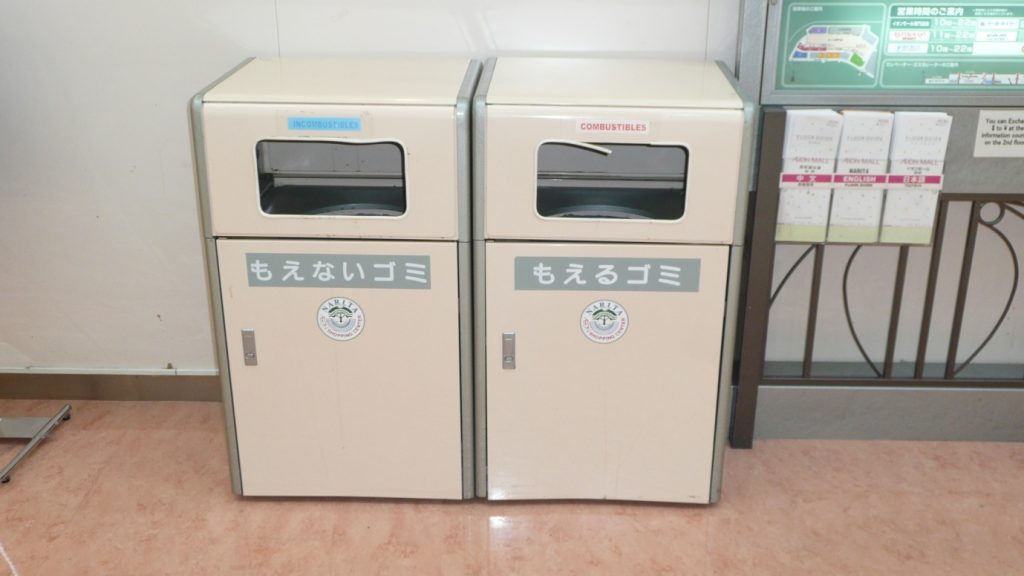Learn the Rules of Japan’s Trash & Recycle Disposal
When you live in housing complexes such as apartments you will deal with many different people in your daily life. Therefore, it is important to adhere to the following rules and guidelines in order to maintain amicable relations with others in your neighbourhood. However, for international students and foreign expatriates alike, the garbage disposal rules and instructions can be very confusing and difficult to follow. Therefore, for this topic, this article will be split into two parts. The second part of this article will be posted the following month.
Information Regarding Rubbish Disposal
The method of rubbish disposal varies from one municipality to the next. Also the day and time of collection depends on the type of rubbish. For details specific to where you live, please ask your real estate agent, a neighbour or staff in the relevant division of your municipal office.
Questions You Should Ask
- What days and times you should put out the rubbish.
- Where you should put the rubbish.
- Which items are considered combustible and which are non-combustible.
- Which items are considered recyclable (bottles, cans, plastics, newspapers, etc.)
- How to dispose of bulky refuse.
Fukuoka City collects household garbage separately, and as such, citizens are required to dispose of them according to set rules. Garbage must be disposed of in designated bags available at supermarkets, convenience stores, etc., separated into three categories of burnable garbage, non-burnable garbage, or glass containers and PET bottles, and put out on the scheduled days. For anything that does not fit into the bags, you must dispose of them as oversized waste by applying with the Oversized Garbage Disposal Call Centre. Among the three categories mentioned earlier, we will take a closer look at burnable and non-burnable items, as the third category (glass containers and PET bottles) is rather straight-forward.
What Are Burnable Items?
Burnable items include kitchen waste, non-recyclable plastic, rubber items, leather items, bamboo or wooden items, entirely empty disposable lighters, disposable diapers, pet excrement, empty kerosene tanks, clothes and futon mattresses, cold packs and paper trash and tin foil.
There are certain conditions and requirements for certain items, but I am not really sure how strictly these requirements are enforced and how strictly people abide by the requests. The collection agencies ask people to remove any excess water from their food waste to prevent odours as well as unnecessary weight and mess. They also ask that cooking oils be chemically coagulated or absorbed completely with paper towels.
Non-recyclable items include plastic bottles for cooking oil, mayonnaise, detergent, and shampoo, plastic hangers, toys, videotapes, CD’s, DVD’s, egg trays, PET bottle caps and labels. Rubber items consist of Rubber boots, gloves, sandals, toys, hoses, and kitchen mats. Leather items consist of leather shoes, handbags, belts, bags, wallets, and other leather items. If a leather item (like a belt) has metal, the metal should be removed and disposed of in a non-burnable garbage bag. For bamboo and wooden items, they should not be bigger than 1 meter in length and 5cm in diameter and should fit in the bag without causing the bag to tear. In disposing of a wooden broomstick, the handle may stick out of the top of the bag as long as the rest of the broom is secure inside the bag. For disposal of tree branches, it is requested that large amounts are brought to a designated processing facility. Disposable lighters must be entirely empty which can be made certain by pressing on the lever. In disposing of disposable diapers, collection agencies request that excrement be removed before disposal. Pet waste is asked to be dried and secured tightly in a plastic bag.
What Are Non-Burnable Items?
Non-burnable items consist of aluminium and steel cans, entirely empty aerosol cans, metal pots and pans, metal items like hangers and wire, small appliances, glass, porcelain and ceramic, umbrellas, fluorescent tubes and dry batteries, disposable pocket warmers, kitchen knives, thermometers, and gardening soil. Steel and aluminium cans are sorted and recycled.
To make sure an aerosol can is entirely empty you can remove the push cap so that there is just the small tube and press the small tube against the centre spot of the top of the container lid. Small appliances that are accepted as long as they fit in the designated non-burnable bag are: vacuums, printers, toasters, rice cookers, and electric pots.
Glass cups, plates, formula bottles, medicine bottles, window glass, vases, aquariums, ashtrays, ornaments, light bulbs, opaque white and broken bottles are disposed of as non-burnable items. Glass containers for soft drinks, liquor, seasoning, cosmetics, and food (like jam jars) are to be disposed of in the recyclable bag designated for PET bottles and glass containers.
If someone is disposing of broken or sharp glass, it should be wrapped in cardboard and marked. Porcelain and ceramic bowls, plates, ornaments, and flowerpots are disposed of in non-burnable designated bags. The same requirements for disposing of a burnable wooden broomstick apply to umbrellas. The handle of an umbrella may protrude out the top of the designated non-burnable bag, but it is requested that umbrellas not be longer than 1 meter in length and 5cm in diameter. Fluorescent bulbs and dry batteries can be disposed of at collection stations such as ward offices and citizens’ centres or taken to 3R stations. Kitchen knives should be wrapped in thick paper and marked the same as broken glass.
People are asked to recycle small household electronic items such as cell phones, cameras, game consoles, music players, chargers, remote controls, electric cords, and other electronic accessories and devices by dropping them off at collection boxes located in ward offices and supermarkets.












